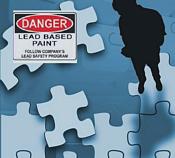Guest Blog: RRP Opt-Out, Don’t Hold Your Breath...

BIO: Dean Lovvorn is a residential remodeler who has done numerous RRP projects. He is also a Lead Inspector, Lead Risk Assessor and EPA RRP Renovator Instructor.
RRP Opt-Out, Don’t Hold Your Breath...
There has been a lot of chatter about the recent Lead Reduction Amendments Act of 2012, where the Senate bill proposes to return the Opt-Out to the Renovation, Repair and Painting (RRP) Rule. You can find this topic on most every contractor message board. The bill was introduced by Senator Inhofe (R-OK) and is co-sponsored by several other republicans. NARI, NAHB, and many other contractor organizations have praised the efforts of Senator Inhofe.
The big question, is should contractors get their hopes up?
The Probabilities
 The first thing you should consider is that all bills introduced must first go to committee. The second thing you should realize is that the vast majority of bills introduced … will never get out of committee review and thus, will never get a chance to be voted on. Thirdly, even if the bill gets voted on, it must be approved by the majority of Senators (in this bill’s case). Lastly, even if passed by the Senate; the House & President must approve.
The first thing you should consider is that all bills introduced must first go to committee. The second thing you should realize is that the vast majority of bills introduced … will never get out of committee review and thus, will never get a chance to be voted on. Thirdly, even if the bill gets voted on, it must be approved by the majority of Senators (in this bill’s case). Lastly, even if passed by the Senate; the House & President must approve.
It is a long uphill battle. You also need to realize that most bills introduced are simply grand standing. A way to get attention and show those who give money to your campaign or vote you into office … that you are doing something.
Where RRP Came From
 The grandparent of RRP is Title X of the Housing and Community Development Act of 1992, also known as the Residential Lead-Based Paint Hazard Reduction Act of 1992 (Title X). The grandparents gave birth to the parent of RRP, Title IV—Lead Exposure Reduction, which amended the Toxic Substances Control Act (TSCA).
The grandparent of RRP is Title X of the Housing and Community Development Act of 1992, also known as the Residential Lead-Based Paint Hazard Reduction Act of 1992 (Title X). The grandparents gave birth to the parent of RRP, Title IV—Lead Exposure Reduction, which amended the Toxic Substances Control Act (TSCA).
What is not often talked about is where “Section 402(c)(3) of the Toxic Substances Control Act (TSCA) requires EPA to regulate renovation or remodeling activities in target housing (most pre-1978 housing), pre-1978 public buildings, and commercial buildings that create lead-based paint hazards“. The RRP falls under the TSCA, Section 402 (c)(3).
Conclusion
 To put it simply, we need to come to grips that the RRP is most likely going to be required on public and commercial buildings. Public and commercial buildings have adults in them. Would it make sense to Opt-Out adults in target homes, but not Opt-Out adults in public and commercial buildings? Unfortunately, the answer is most likely not.
To put it simply, we need to come to grips that the RRP is most likely going to be required on public and commercial buildings. Public and commercial buildings have adults in them. Would it make sense to Opt-Out adults in target homes, but not Opt-Out adults in public and commercial buildings? Unfortunately, the answer is most likely not.
So for those who are hoping for the Opt-Out to return, prayers may be in order. It may be the only thing that has a chance.

 Looking for accurate information about the EPA RRP rule?
Looking for accurate information about the EPA RRP rule? 


